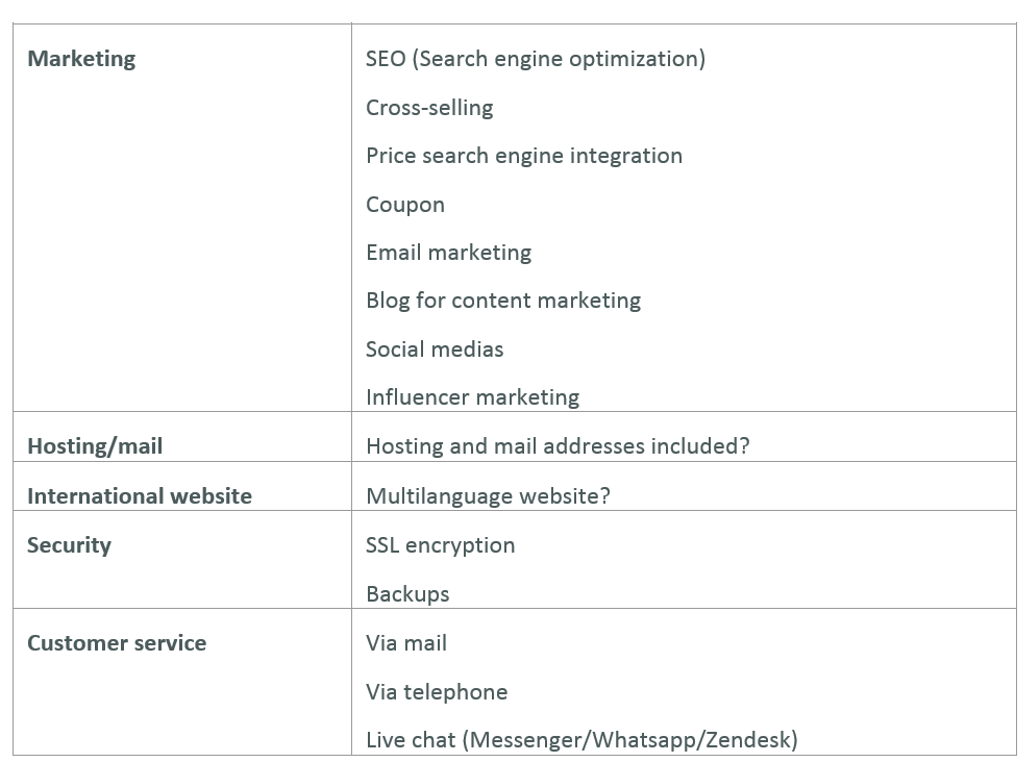take your business online in 5 steps
Sissiworld and Playtime have teamed up to bring to you the art of creating your e-shops and websites for your business. Keep reading to find out how to bring your e-shops to life - from laying the foundation to ensuring a high number of monthly visitors!
If covid-19 has taught us anything, it is that being online is really essential for your business. You should open an online shop to reach your customers everywhere, even in lockdown time. You can sell the current season and also free up space in your warehouse by creating a small outlet section!
Often the quotations of the web agencies to create websites are very expensive and, due to the crisis that Covid created with less sales, you decide to give up your eshop, and the opportunity to sell more and reach more customers (and also to work from home) vanishes…
1. Your e-shop made by you!
You can do by yourself: it’s not so difficult and the world of web offers several options nowadays, even if you are a tech-dummy!
2. Complexity and budget
This is a critical decision. How long and how many resources are you willing to invest in this project?
Here you can find providers into three categories based on their complexity:

There are some differences that are worth explaining: a simple shop built with Jimdo or Wix is easy to implement in a very short time. Anyone who is a little familiar with the internet will be able to understand in a few hours how its interface works. In general, a weekend is more than enough to start an online store.
Medium complexity online store systems (like Shopify or BigCommerce) offer a wider range of features. The integration and addition of payment systems, although useful, require a deeper learning curve and a higher budget. You will have the possibility to manage much larger stores, including also additional marketing options, such as cross-selling, price search engine, etc.
Complex online stores like Prestashop or WooCommerce or Magento are made for bigger projects. Beginners without particular technical skills would almost certainly not be able to implement open source systems that require manual installation and configuration. You will also need your own web space. Less complex online shop systems do not meet these requirements: hosting services place stores in their cloud systems. The configuration times vary a lot and depend above all on the chosen provider and on how much you decide to customize the design and the code.
3. Your decisions
There are several aspects and options you should think about and decide before creating a website for your shop


4. Legal aspects
As with any business, opening an online store must meet some formal requirements that change a lot depending on the country you are in. So make sure you're using a platform that respects them 100%.
Here's what to keep in mind if you want to open an online store respecting basic legal requirements:
- Legal information: company name, address of the home or registered office, VAT number, as well as contact details such as email, telephone number, etc. they must be present on the site;
- General Conditions of Use: must be expressed clearly and unequivocally;
- Privacy: include a privacy policy, indicating how personal data will be acquired during the purchase process and how they will be processed;
- Returns: your customer can exercise the right of returning the purchased product. The conditions regarding the right of withdrawal must be clearly communicated before the purchase is made;
- Shipment: keep the receipt of the shipment in the event that the package is lost to prove that the shipment has actually been made;
- Copyright: use photos free of copyright and make sure you can use them asking to the brands or to the photographers.
5. How to generate Web traffic and increase visits to your virtual store
There is no point in running the best online store if you don't have customers visiting it. There are several ways to attract new potential customers.
Free traffic
Free sounds good, right? There are various ways to benefit from free traffic: SEO, social media, and email marketing.
SEO (Search engine optimization) is a long process. It can take months to find that particular combination of keywords that generate visits. Once you reach the first page, you are likely to hold on to the top for a while, but this will mainly depend on how well you understand the SEO competition and the actions it will take in this regard.
Investing in SEO is particularly beneficial when there are already many online searches for people who want to buy a product you are selling.
Let's imagine you want to sell MacBooks. This keyword is used hundreds of times a day on Google (according to Ahrefs, the actual number is around 28,000 times a month). At this point you can try to take a slice of visits using SEO techniques. In this particular case, getting to the first page of results by searching for "macbook" will, however, be almost impossible as competition is simply too strong.
Instead, you should try to optimize your website for keywords like "macbook air review". These terms have only been used around 300 times a month, but competition isn't that tight.
You will get the most out of Facebook, Twitter, YouTube, Instagram, and Pinterest if you sell a trendy and eye-catching product. Products that people buy extemporaneously: a fun shirt, an interesting documentary, a coat rack with an original design or a backpack with integrated power bank.
In short, things that people still don't know they want to buy. Things that are shared on social media are faster in spreading the word. In order for this strategy to work, you generally need a large number of fans and followers.
At the beginning, you have a small number of subscribers, so you can use some free newsletter managers, excellent for beginners. A newsletter is particularly useful if you want to encourage your recipients to revisit your online store or old customers to buy more.
You can collect email addresses by offering a discount coupon, for example, and communicating this on your social medias. Once these addresses are obtained, you can send automatic emails to your potential customers, or an automated sequence of pre-packaged emails that invite recipients to visit your site.
Paid traffic
The easiest and fastest way (for those with money)
Two services come to mind for this strategy: Adwords and Facebook Ads. As we have already mentioned, first of all it is necessary that you know the product you are trying to sell well. To promote a good-looking or trendy product, Facebook is the most suitable. Furthermore, with Facebook it is very easy to find your target. For example, you can create shirts designed for groups with particular interests (such as people with a drone hobby) and advertise them specifically to this interest group.
Google Adwords is designed mostly for search volumes and prices per click. After all, it's the return on investment that matters, and this should ideally be positive.
For more information, you can visit www.sissiworld.net or check out her Instagram page - SissiMum
Creating a website for your business
-Sissiworld
—
15















